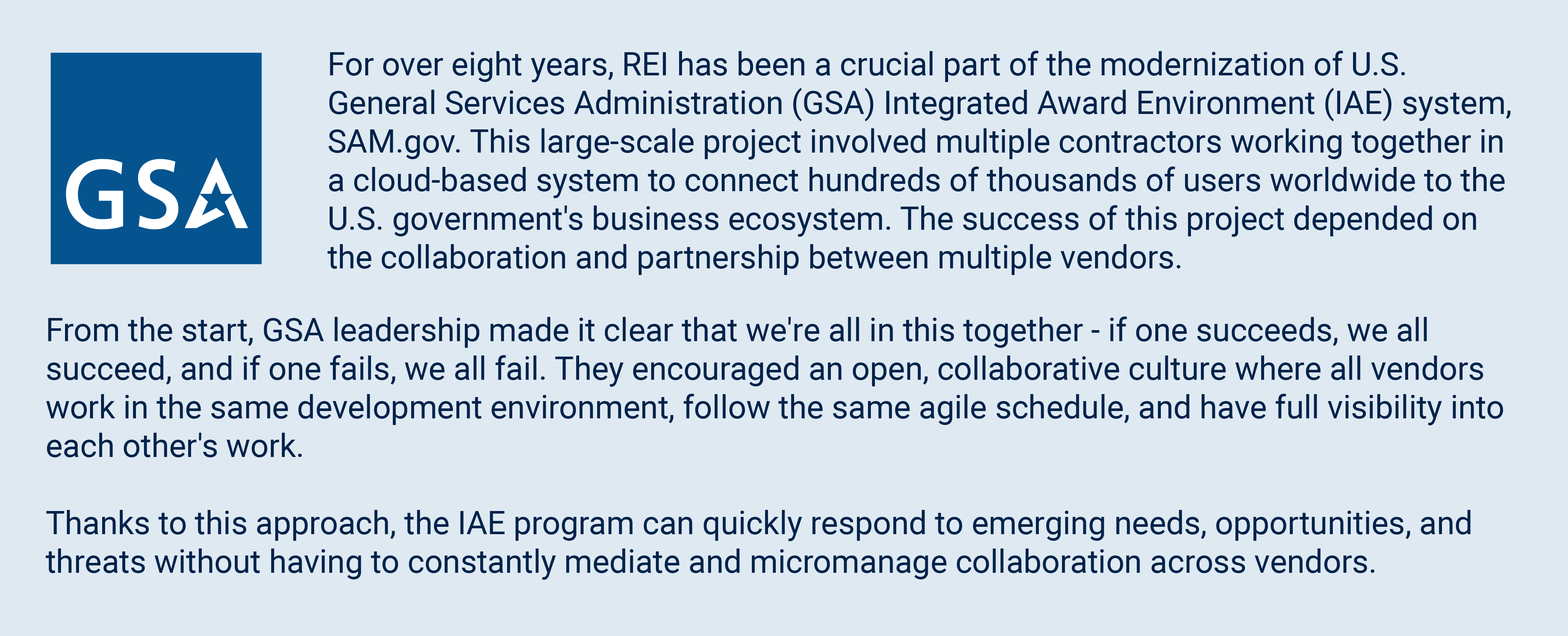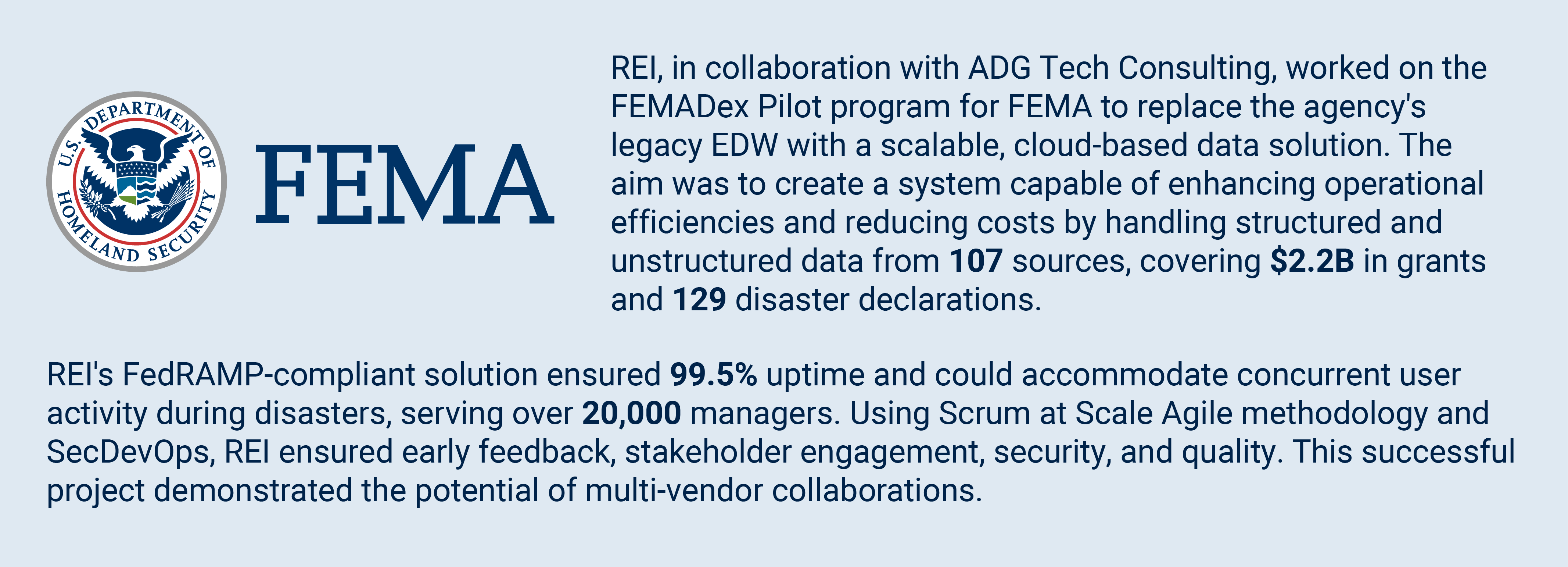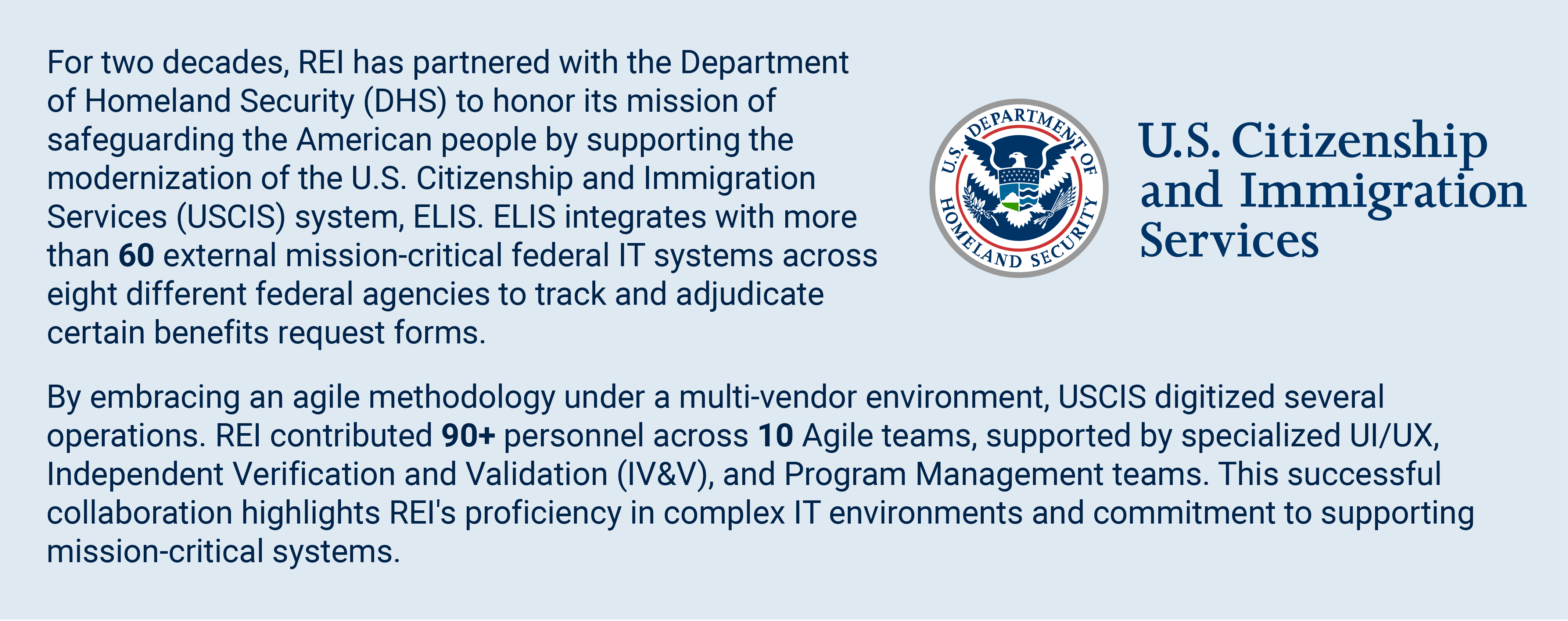By Manan Gandhi and Jeff Myers
Multi-vendor environments will continue to be one of the best investments government agencies can make concerning their IT initiatives. Delivering agility, resiliency, security, and cost-effectiveness helps agencies maintain control of the overall project, while connecting to many innovations and expertise. For example, the U.S. Department of Defense and the U.S. Department of Homeland Security introduced a multi-vendor approach for their cloud computing needs, resulting in increased security, faster processing times, and more efficient use of resources. But what do agencies need to make these environments successful, and what circumstances must exist to accommodate them?
Unlock Extraordinary Digital Transformation
Multi-vendor environments are typically used for major digital transformation efforts and programs with a value of at least $5M per vendor. Agencies usually slice up the program by assigning specific roles to each vendor, such as Development, Modernization, and Enhancement (DME), Operations and Maintenance (O&M), infrastructure support, Data Migration, or Independent Verification and Validation (IV&V). Alternatively, an agency may seek support from several vendors, each providing the same full-range services, such as developing and maintaining an application. In other cases, agencies may intentionally choose a group of vendors with different expertise, relying on each vendor for a specific domain, such as financial systems, case management, or application development. The approach will depend on the program’s particular needs and the agency’s goals.
Multi-vendor environments offer several advantages, including risk mitigation to avoid vendor lock-in. Additionally, multi-vendor approaches prevent a single large vendor from having too much power. By working with multiple vendors, agencies can access a wider range of talent, ideas, and corporate depth, enabling them to choose the best vendor for each specific task or project. This is particularly important in programs that require very different skills that may not be readily available from a single vendor. Ultimately, the benefits of a multi-vendor approach depend on the specific needs of the program and the agency’s goals, but successful environments include:
- Development of on- and off-ramps to allow for vendor changes as needed
- Creation of a forum for collective problem-solving and commitment requirements from all vendors
- Implementation of robust oversight and a product management layer to ensure successful program delivery
- Proactive mediation of any issues that may arise between vendors
- Recognition that continuous competition can both keep vendors accountable and increase costs but also reduce the ability to notice synergies and remain customer-focused
- Assignment of the same scope to all vendors to maximize flexibility and scalability
- Use of performance service level agreements (SLAs) to assess vendor performance regularly, ideally with a balanced scorecard that aligns with the program’s mission
- Enablement of vendors to provide input regarding each other’s performance assessments
Overall, while multi-vendor environments can benefit agencies significantly, it is essential to carefully strategize, plan, manage, and monitor these arrangements to ensure success.
Navigate Common Challenges
While multi-vendor environments offer many benefits, there are challenges. For example, managing multiple contracts can be costly and complex, requiring significant resources to negotiate and manage effectively. In addition, shared responsibility for specific program areas can lead to finger-pointing or a lack of accountability in the event of problems. When a single piece of software relies on multiple vendors, someone must manage interdependencies to ensure the product works seamlessly together. One vendor may be unable to assign a task to another, hindering progress and putting schedules at risk. Finally, some vendors may be hesitant to share intellectual property, which can present challenges when working collaboratively in a multi-vendor environment. Addressing these challenges requires careful planning, clear communication, and a commitment to collaboration and transparency among all parties involved.
Keys to Success
To successfully navigate multi-vendor environments and overcome common challenges, it’s important to prioritize the agency’s mission above all else. All parties involved should work collaboratively to ensure that decisions are made in the program’s best interest. Building a solid working relationship with counterparts from other vendors is critical so everyone can work together effectively. Open communication, information-sharing, and transparent reasoning with others are essential in a multi-vendor environment. Regular meetings with other vendors should be scheduled to facilitate open discussion and ensure everyone is informed of progress and issues that need to be addressed. By emphasizing collaboration, transparency, and trust-building, multi-vendor environments can be successful and deliver optimal outcomes for federal agencies and their stakeholders.
- Government Stakeholders must set a clear tone of collaboration and establish all vendors as being mutually vested in both success and failure.
- All work must be visible to all vendors.
Building a culture of collaboration goes beyond merely establishing effective process governance. It must also enable vendors to build mutually beneficial relationships based on trust, collaboration, and respect.
About the authors:
- Manan Ghandi is a Program Manager at REI Systems who has managed delivery of complex, enterprise scale IT application modernization projects for federal agencies such as GSA, HHS and DHS.
- Jeff Myers is a Senior Director at REI Systems who has more than 30 years of experience helping to improve government’s efficiency and effectiveness in achieving public sector missions.







